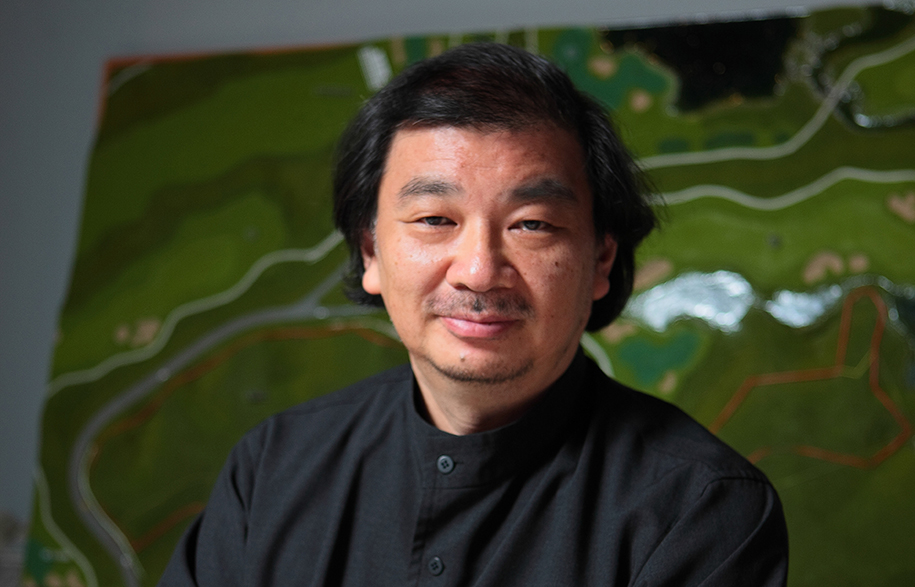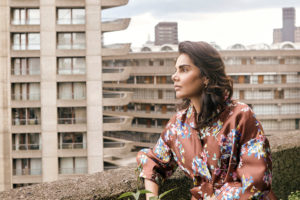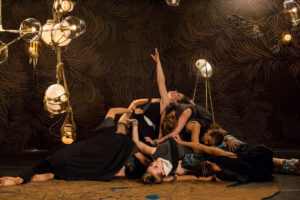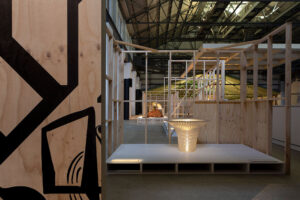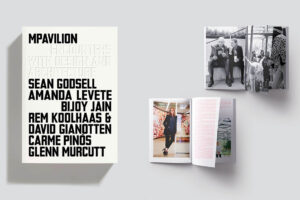Your installation at Sherman Contemporary Art Foundation opens this Saturday. What can we expect to see there?
In the courtyard there will be my disaster relief structures designed in response to the Kobe earthquake of 1995 and to the Ecuador disaster of 2016. Inside the gallery there are scale models of my Cardboard Cathedral for Christchurch that was completed in 2013 following the earthquake there, and also my Japan Pavilion that was installed for the World Expo in Hannover in 2000. It’s always interesting to me to look back over my work, but it’s difficult for me to describe the changes. This is more up to the viewer.
What made you decide to become an architect?
When I was very small, I wanted to become a carpenter. I loved the idea of working with wood. But at that time in my life I didn’t know that the profession of architect existed, what an architect could be and the mark that an architect can make on a city and on people’s lives.
Who were your early influences?
I was never much interested in style, or architectural fashions. They come and go all the time. I was always intrigued by the structural work of Otto Frei, and Buckminster Fuller. I was and still am a great admirer of American architect, John Hejduk. The poetry of his work is very powerful.
You are most renowned for your disaster relief architecture, but you also do great urban monuments, like the Centre Pompidou in Metz or the Aspen Art Museum. How do you approach these seemingly wildly disparate briefs or set of circumstances?
You know, architects mostly work for privileged people, people who have money and power. Power and money are invisible, so people hire us to make their power visible, to give it form, so we make money into monumental buildings. I love to make monuments, but I also think it is important to use my knowledge and experience in the service of people who are in situations of danger. Architecture can do these two things at one, without one contradicting the other.
Today you have offices in Tokyo, New York and Paris. How do you divide your time?
I used to go to New York every two weeks, but now I ask my New York staff to come to Tokyo or Paris because I commute between those two cities every week. That means I now only need to go to New York once every two or three months, but my New York staff come to me.
How many staff do you have in your three offices?
Six people each. I don’t want to make my office any bigger because I want to design everything by myself with just the bare minimum support staff.
Why do you maintain an office in Paris?
I opened the Paris office after I won the competition to design the Centre Pompidou in Metz (capital of the Lorraine region in north-east of France). At the time it opened in 2010 it was my only French project, but since then we have picked up a few more projects in Europe which keep the Paris office running.
You were on the Pritzker Architecture Award jury of 2007, 2008 and 2009, which recognized, respectively, the work of Richard Rogers, Jean Nouvel and Peter Zumthor. Since then, the Pritzker has gone to architects on the periphery, either in the geographical sense, or in terms of practical ethics. How do you explain that?
I can’t explain that (laughs). You’d better ask the jury! No, I think that the attitude of the Pritzker jury has changed since I was chosen. When I was on the jury in those years, the attitude was much as it had been for years: to award very large, very grand gesture projects. So when I was chosen, I was very surprised because I did not fit the former criteria. So my being awarded the Pritzker seemed to indicate a shift of some sort. Whether the criteria have changed, or whether it’s just an accident, I can’t say.
How long will you be in Sydney for?
Two days. But that’s quite unusual. I normally stay only one night in any city I go to, except Tokyo and Paris.
Shigeru Ban was In Conversation With… Stephen Todd


